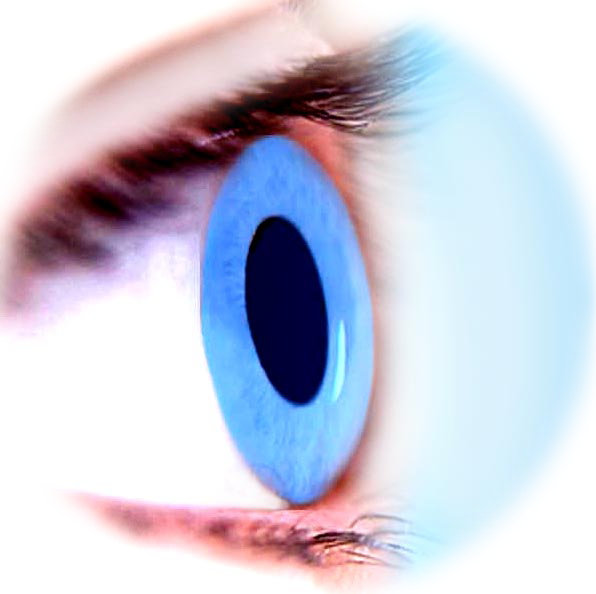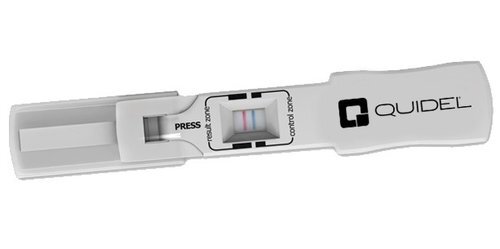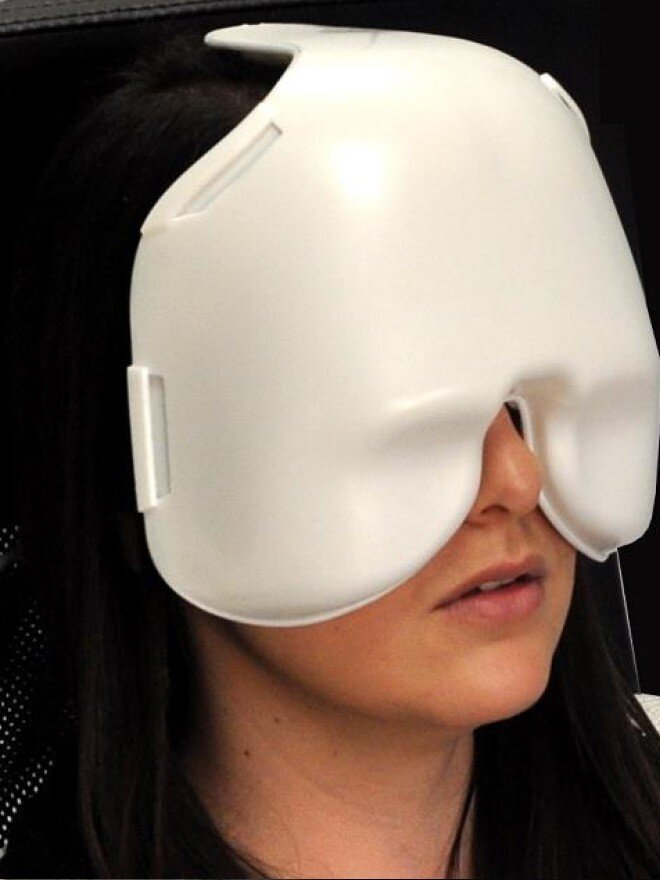BON OPTIC
Technical devices, disposable and more ... for practice and clinic
BON OPTIC from Lübeck is a long-established dealer of optical devices, which has also become an important manufacturer and service provider in the optical field, and far beyond, for practice and clinic.
Many devices from smaller manufacturers for diagnostics and therapy in the field of ophthalmology are only available here. BON OPTIC has developed into an indispensable partner for the ophthalmological practice and clinic.
Dry eye is a focus of the Bon Optic program
The program covers the entire spectrum of ophthalmology - from front to back in the eye.
A special focus of the program is dry eye disease, also known as keratoconjunctivitis sicca or the sicca syndrome, which is the most common diagnosis in ophthalmic practice.
This encompasses all aspects from diagnosis and therapy of the Sicca syndrome to articles for eyelid care.
Since the symptoms of dry eye can often be quite uncharacteristic, it is all the more necessary to carry out a specific diagnosis with a meaningful sequence of diagnostic tests. Other diseases, such as bacterial or viral infections, neurological disorders or disorders of the eyelid function, should be ruled out beforehand.
Diagnostics of the surface of the eye and the tear film
Slit lamps, attachable or mobile devices, and topographers are a first step in diagnosing the surface of the eye and the tear film
Various important examinations of the tear film are already possible with relatively simple devices that can be connected to the slit lamp with little effort.
The Bon Polaris is a practical addition to an existing slit lamp and easily expands the diagnostic possibilities.
The ME-Check system is a device for quick and easy imaging of the Meibomian glands in the eyelids (meibography) - it is mobile or can be mounted on the slit lamp.
A topographer is a diagnostic high-end instrument that allows a series of tear film tests and other examinations of the surface of the eye to be carried out in a non-invasive manner.
The Bon Antares Topographer also allows, among many other investigations, a non-invasive representation of the structure of the meibomian glands in the eyelids. It´s the workhorse in the anterior eye practise.
Chemical tear film analysis - TearLab
The analysis of the osmolarity enables the simple ascertainment of a numerical value to objectify an important parameter for the evaporative tear film disturbance.
Immunological MMP-9 inflammation factor detection ( InflammaDry )
MMP-9 is an important biomarker for the presence of inflammatory mechanisms in dry eye. This is a protein-dissolving enzyme that is responsible for the destruction of the normal tissue structure in the course of the inflammatory reaction occurring in advanced dry eyes. The detection of an inflammatory dry eye can be an important prerequisite for the initiation of anti-inflammatory therapy and also allows a precise control of the inflammation.
If the specific diagnosis for a Sicca syndrome is positive and the presence of a Meibomian gland dysfunction (MGD) and possibly an inflammatory reaction is verified, then specific therapy measures can be initiated.
It often makes sense to specifically treat the disorder of the lid margin and meibomian glands therapeutically. This can be done effectively with devices that are not part of the routine equipment of an ophthalmological practice, but have proven to be effective new therapy options in studies.
Therapy of eyelids and meibomian glands
Innovative combined EyeLight IPL strong light therapy with low-level light therapy (LLLT)
abrasive mechanical lid edge cleaning - BlephEx
and much more
Diagnosis
Bon POLARIS
Slit lamp adapter for optical tear film examinations
As a practical addition to an existing slit lamp, Polaris easily extends the diagnostic options:
With its LED cold light source, it enables interferometric analysis of the lipid layer of the tear film ("TearScope" examination) and control of the corneal surface.
With the slit lamp optics, the eye is viewed directly through the Polaris. This enables views with different magnifications. In combination with a digital photo/ video slit lamp like the “DigiPro” or a DigiPro retrofit camera for slit lamps from various manufacturers, you can achieve perfect documentation and progress control.
Thanks to a clever universal adapter, you can use Polaris on most common slit lamps. Simply ask your medical device consultant whether your slit lamp is suitable for Polaris.
The power supply takes place via a USB connection or the included power supply.
Various grid foils are included in the scope of delivery (fine grid, negative (inverted) grid, placido rings).
Bon POLARIS
displays the lipid layer
Depending on the thickness and uniformity of the lipid layer, with Polaris you can see various, meaningful structures in the tear film. (amorphous, marbled, wavy, yellow, brown, blue or reddish interference fringes)
shows tear meniscus
With Polaris, you examine the tear meniscus without the addition of dyes, which would influence the composition of the tear film and falsify the results. The tear meniscus can be evaluated according to its height, shape and regularity.
The break-up time
You can easily determine the non-invasive tear break-up time (NIBUT) using the various grids provided and evaluate the stability and regularity of the tear film.
The surface
With its concentric rings, the placido circle pattern is used for keratoscopic control of the corneal surface.
ME-CHECK - Simple visualization of the Meibomian glands - Meibography
Me-Check® enables a simple visualization of the Meibomian glands in the eyelid (meibography) - directly on the patient.
This is done with a device for contactless infrared meibography consisting of a digital infrared camera and a tablet computer.
It can be operated mobile or at the slit lamp and allows a simple orienting assessment of the condition of the Meibomian glands as a diagnostic marker for dry eye.
The recorded image is compared with the scale developed by Dr. Heiko Pult. Thus, it is possible to define the severity of the pathology in a globally recognized evaluation scale.
Features:
objective and automated screening
fast (approx. 3 minutes) and easy to use
can be used on the slit lamp and hand held
made of ultra-light materials
ergonomic, innovative design
special high-resolution camera
LEDs for best illumination of the eyelids
mobile, battery operated operation possible
works with a 7" tablet of the latest generation
app and cloud-based patient database
Bon ANTARES
- The high-end dry-eye topographer
Topographer are devices that summarize many different examinations of tear film, tear quantity and surface of the eye. This was previously only possible with separate instruments or not at all in conventional ophthalmic practice.
Bon ANTARES Topographer is the workhorse
… in the Sicca consultation,
… in contact lens fitting
... and ... and ... and
In contact lens fitting, the modern "Antares" system allows
high-precision corneal topographies
comprehensive tear film analysis
exceptionally large measuring zone and 24 analysis rings for very detailed investigations and best results
multiple light sources
"Tearscope" studies
real fluo images
professional meibography with classification.
In addition to diagnostics, the instructive images can also help with patient information about dry eye disease and thus improve patient compliance with the necessary chronic therapy.
Chemical tear film analysis - determination of osmolarity
Increased osmolarity of the tear film, also called hyperosmolarity, is a typical consequence of increased evaporation of the aqueous tear phase in dry eye disease.
Hyperosmolarity due to increased evaporation typically occurs in the evaporative type of Dry Eye due to oil deficiency in meibomian gland dysfunction (MDD) .
Dry Eye Disease is the most common diagnosis in ophthalmological practice. It is dependent on many risk factors and it generally increases in frequency with increasing age.
Therefore, the dry eye, with corresponding surface disorders, is the most common secondary diagnosis in patients who present themselves for routine intraocular interventions such as cataract extraction.
Surface disorders can complicate wound healing and visual rehabilitation, for example after a cat operation. In addition, many patients can develop subjective dry eye symptoms for the first time even after a small intraocular procedure .
Careful diagnosis of dry eye disease, for example by means of a rapid chemical osmolarity determination of the tear film, as well as adequate therapy in the sense of surface care before and after the operation can therefore be an important component of successful surgical therapy.
Chemical tear film analysis to determine osmolarity becomes an important clinical diagnosis
Tear Lab (BonOptic)
TearLab is the revolutionary tear film analysis system for quick and easy determination of osmolarity. It provides you with reliable and meaningful values for the assessment of patients with wetting disorders of the surface of the eye, such as keratoconjunctivitis Sicca / dry eye.
Do you let hyperosmolarity determine the success of your cataract surgery?
The latest studies show a connection between hyperosmolarity and inconsistent visual acuity, especially in the cylinder area. Fluctuating measured values during the biometric preliminary examination could have a noticeable effect on the IOL calculation and thus lead to your patients' dissatisfaction.
17% of all patients with hyperosmolarity showed a difference of more than one diopter in the cylinder values between two preoperative examinations. In 10% of the cases there was a clear deviation of more than 0.5 diopters in the IOL calculation.
In addition, hyperosmolarity permanently damages the epithelial cells and affects the glycocalyx integrity.
Measuring osmolarity before every cataract surgery should be as natural as pachymetry before LASIK.
TearLab is the ideal tool for this, providing you with reproducible quantitative results within a few seconds. Concrete numerical values enable optimal documentation and monitoring and make it easier for patients to understand changes.
Tearlab improves compliance and increases patient satisfaction.
Operation is very easy and can be perfectly integrated into the workflow.
Inflamma Dry Test - inflammation factors
MMP-9 is a very sensitive diagnostic marker for dry eyes.
The dry eye is a very common disease that is often underestimated and underdiagnosed. It affects approximately 5-30% of the population aged 50+.
InflammaDry® is the first rapid test that measures the MMP-9 level . MMP-9 is an inflammation marker that shows an elevated level in the tears of patients with dry eyes.
Make the right diagnosis with an easy-to-use quick test to detect dry eye.
InflammaDry® gives you exact results within 10 minutes .
Right diagnosis
MMP-9 is a very sensitive diagnostic marker for dry eyes. Inflammation may be present before the clinical symptoms of the dry eye.
Increased MMP-9 activity in dry eyes may lead to impaired barrier function and increased desquamation (desquamation) of the corneal epithelium as well as irregularities in the corneal surface.
Right treatment
Dry eyes require an extensive treatment plan and continuous therapy. Artificial tears and punctum plugs can improve signs and symptoms and help reduce visual irritation. Anti-inflammatory therapies have shown that increased MMP-9 activity can be reduced.
Right now
Results within 10 minutes.
InflammaDry is the only rapid test that tests for MMP-9. Most other dry eye tests measure tear production and / or stability. InflammaDry detects elevated levels of MMP-9 in patients who might otherwise be missed using other test methods.
THERAPY
EYE-LIGHT - IPL and LLLT
Bon Optic introduces a new device, the EYE-LIGHT, with an innovation in light therapy for dry eye caused by oil deficiency in meibomian gland dysfunction (MDD) and blepharitis. Oil deficiency on the tear film caused by MDD with subsequent increased evaporation of the tear water is the most common cause of dry eye.
The EYE-LIGHT offers 2 techniques in one device
IPL intense pulsed light therapy in an optimized form with OPE
Both techniques can complement each other in the therapy of Meibomian gland dysfunction (MDD).
IPL with OPE® - OPTIMAL POWER ENERGY
OPE® is a patented broad spectrum technology that excludes all emissions that are not relevant to the treatment.
The interaction of the OPE® technology with the tissue is essentially thermal and, thanks to the integrated management software, enables the heat output to be optimized, which stimulates the Meibomian glands to resume normal functionality.
Please see a product brochure
IPL with OPE® offers some special features
Thanks to the patented and unique cooling module, no gel is required, making treatment easier, faster and cheaper.
The intuitive software enables the operator to work optimally and safely from the very first treatment. It supports him with automatic adjustment of the power and duration of each light pulse.
With approx. 12 cm², EyeLight offers the largest treatment area available on the market - up to three times more than the competition.
EYELIGHT Low Level Light Therapy ( LLLT )
LLLT is a novel colored light therapy of ocular surface disease due to Meibomian gland dysfunction (MGD)
MyMAsk is a new innovative treatment device for the application of LLLT at the ocular surface
it supplements the strong light therapy (IPL) of the meibomian glands that has been known for some years
Low-level light therapy (LLLT), in which light of lower intensity in a certain frequency range is emitted over a larger area onto the facial skin in the cheek area and around the eyes via a face mask.
LLLT is, according to studies, also effective in Chalazia (Hailstone)
Both methods of light therapy are carried out one after the other and should complement each other in order to lead together to an optimal effect with rapid onset of action.
BLEPHEX - mechanical eyelid cleaning
With malfunction of the Meibomian glands - known as Meibomian Gland Dysfunction (MGD) - is the most common cause of dry eye, there is typical build-up of depositions and incrustations on the edge of the eyelid.
The depositions consist of hardened Meibom oil and fatty acids, as well as excessive bacterial colonization and bacterial products. Demodex hair mites occur at the ciliary hairs and collarettes are often seen around the eye lash base.
These deposits contain inflammatory substances and promote the worsening of MGD and chronic eyelid inflammation (chronic blepharitis).
These stubborn incrustations on the edge of the eyelid are often difficult to remove completely by conventional mechanical eyelid margin cleaning at home by the patient. Therefore, an instrument for mechanical abrasive cleaning of the edge of the lid can be a valuable aid in the treatment of MGD and chronic blepharitis.
BLEPHEX works like a small drill with a rotating, disposable sterile brush head that gently but thoroughly cleans the edge of the eyelid. An additional cleaning solution is provided to make the cleaning in the doctor's practice even more effective.

















